How to keep fresh herbs in the refrigerator for a long time: 8 simple ways
Content:
Not every housewife knows how to store herbs in the refrigerator. For many, in just 1–2 days, the herbs dry out or wither, or even become completely covered with mucus. They not only become tasteless, but also lose almost 100% of their nutrients. It’s good when there is a vegetable garden nearby, from where you can pick another bunch of fresh dill, parsley or green onions. And if not? Then all that remains is to apply methods for long-term storage of greens - and we will tell you about them in detail.
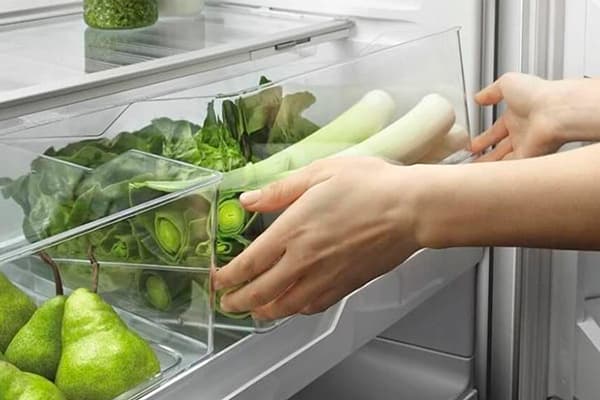
Storage conditions
Greens, especially onion and salad-spinach varieties (green onions, spinach, cilantro, sorrel, watercress) have large cells and a large surface area for moisture evaporation. That is, it is prone to drying out quickly. However, when there is excess moisture on the leaves, bacteria begin to actively multiply and mold appears. As a result, the herbs wither, acquire an unpleasant odor, and become covered with mucus.
Doesn't like greenery or sun. UV rays destroy chlorophyll: the leaves turn yellow and lose their aroma. It is for this reason that parsley, dill, basil and other spices are usually dried not in the sun, but in a dark, well-ventilated room.
Due to excess oxygen, tender plants actively “breathe”, releasing heat and carbon dioxide. This causes the leaves to curl and their color to become dark (brown or brown). Once again, the greens are unsuitable for consumption.
The optimal conditions for keeping the product fresh in the refrigerator are shown in the table below.
Table 1. Storage conditions for greens in the refrigerator
| Criterion | Normal value |
|---|---|
| Oxygen | Preferably complete absence (vacuum) or limited access |
| Temperature | 0–4 degrees |
| Humidity | 90–95% |
| Accommodation | Lower special compartment for vegetables |
Preparation for storage
At this stage, many housewives who want to keep their greens fresh make the mistake of washing them. However, this should be done immediately before consuming the product. If you wash the plants right away, you can disrupt their fragile structure and damage some of the cells. This will only shorten the shelf life.
How to prepare greens for storage correctly? We suggest you do the following:
- If water droplets accumulate on the leaves, gently shake them and let them dry. But don't leave it in direct sunlight.
- Remove excess dirt with a paper towel.
- Sort through the herbs. Discard dried, rotten and blackened parts. Cut off the roots but leave the stems.
Greens, especially tender ones (lettuce, spinach, sorrel, cilantro) should be stored as early as possible. Already 2 hours after collection, vitamin C begins to degrade. It is most likely no longer present in the store product, but vitamins B, E, K, and minerals are present. You can preserve them if you put the herbs in the refrigerator within 1-2 hours of purchasing them.
Saving methods
There are many popular ways to preserve green onions, dill, parsley, cilantro, basil and other herbs for a long time. Let's consider each of them, analyze the pros and cons.
Plastic bag
The plastic bag protects plants from excess oxygen and maintains an optimal humidity level (90–95%). At the same time, it costs a penny or even goes to the hostess for free. The main disadvantage of this packaging is that the greens in it remain fresh for no longer than 5–7 days.
Pack one small or medium bunch into each bag. Don't mix different types of greens. Inflate the bags and tie tightly.
Paper towels
Perhaps the most ineffective way to keep herbs fresh, but for some reason very popular among housewives. Extends the shelf life of the product to 3–5 days.
Wrap a small bunch of herbs in a paper towel, forming a “sausage”. Lightly spray it with water from a spray bottle. This will protect the plants from drying out.
Please note that newsprint is not suitable for storing greens in the refrigerator. It contains traces of printing ink containing harmful substances that can penetrate into products.
Vacuum container
For long-term storage of greens in the refrigerator, a vacuum container equipped with a pump for pumping out air is most suitable. Since no oxygen penetrates into the packaging, the herbs are not exposed to bacteria and germs. In addition, inside the container the greens are almost not subject to evaporation and retain moisture.
In a vacuum, the shelf life of green onions is 1 month, other types of greens - 2-3 weeks.
When choosing a vacuum container at a hardware store, try not to skimp. Buy products from reliable companies:
- Steba,
- Status
Cheap products may be defective and leak air.
It is desirable that the container material be polypropylene. It is mechanically strong and resistant to any temperatures, including negative ones. But a material such as polycarbonate may contain bisphenol A, a toxic substance that has carcinogenic properties and has a bad effect on the hormonal system.
So, you bought a vacuum container. Rinse it thoroughly from the inside, dry with a clean towel and dry. Then fill the volume 2/3 with greens. Bunches of herbs should lie freely. Close the lid, pump out the air and store the product in the refrigerator.
Regular plastic container
The rules for packing greens in a regular container are the same as in a vacuum container. Only the shelf life will be a maximum of 10–12 days, since some of the oxygen will penetrate into the packaging. But this is still more than using plastic bags or paper towels.
Glass jar
Glass is an environmentally friendly material, unlike many types of plastic. A regular jar allows you to keep greens fresh for up to 10–14 days. Before use, the container must be thoroughly washed and dried.
Take jars up to 1–1.5 liters in volume, putting 2–3 small bunches of herbs in each. Then cover tightly with plastic lids. During storage, check whether condensation has accumulated on the walls. If this happens, remove excess moisture with a cloth.
Container with water
There are three “tenacious” types of greens - parsley, green onions and dill. These spices contain many essential oils and phytoncides, so they are not spoiled for a long time by microorganisms.
To extend the life of plants up to 1 week, follow these steps:
- cut off the ends of the stems;
- pour cold water into a glass container;
- lower the herbs into the container with the stems down, like a bouquet of flowers;
- cover the upper leaves with a plastic bag or wrap with damp gauze;
- put the greens in the refrigerator.
The water should be changed every 2 days. Before consuming herbs, cut off the stems and rinse the leaves under running water.
Using the Bow
A non-standard method of preserving the freshness of greens extends the shelf life of the product to 2 weeks by suppressing the activity of bacteria. Unfortunately, the herbs take on a characteristic onion-like aroma.
It is better to take red onions for storing greens, which contain more phytoncides than other types.
Place the herbs in a plastic bag. Without removing the peel, cut the onion into 4 parts and place with the greens. Tie the bags. Twice a week, the herbs should be transferred to a dry bag and the onions should be replaced with fresh ones.
Freezer
The freezer allows you to keep greens fresh for a very long time - up to 12 months. But, unfortunately, it leads to a loss of 40–50% of taste. Most of the vitamins (except vitamin C) are retained.
Freezing is the only storage method before which greens must be washed.
To properly freeze food, follow these steps:
- Pour warm water into a basin.
- Soak the greens for 2-3 minutes. Then wash it carefully.
- Rinse under running water.
- Shake the leaves to remove excess drops.
- Place herbs in a single layer on paper towel. Let dry naturally.
- Wrap dry bunches of greens in cling film, foil or parchment paper in a “sausage” shape.
- Place in the freezer.
Greens can be frozen not only in bunches, but also as slices.And after defrosting, use it as an additive to meat and fish, soups, baked goods, and salads. Grind pure herbs with a knife, scissors or in a blender. Place the slices in a bag (preferably a vacuum or ziplock bag), tie it and put it in the freezer. If you are using a regular plastic bag, try to get as much air out of it as possible.
You can also freeze the greens in ice cubes and then toss them into soups. To do this, fill silicone molds with green slices to 2/3 of the volume, fill them with cold boiled water and put them in the freezer.
Do not store herbs in the same compartment as meat and fish.
Thus, to preserve the freshness of greens, you need to follow three main rules: protect them from oxygen, maintain optimal humidity, and use packaging. You cannot put washed herbs in the refrigerator, but you can put them in the freezer. The most effective storage method is a vacuum container, and the long-term method is freezing. Now you no longer have to add wilted greens to your dishes or throw away spoiled food.
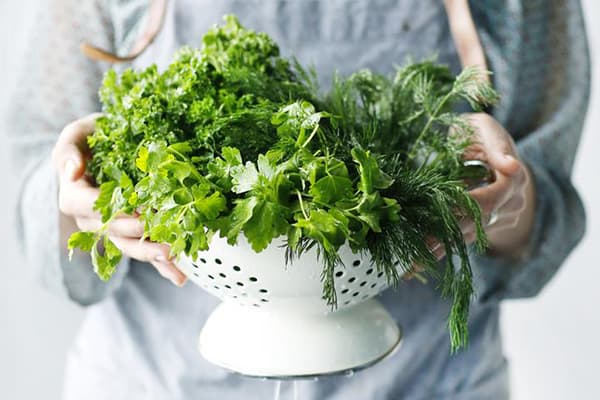
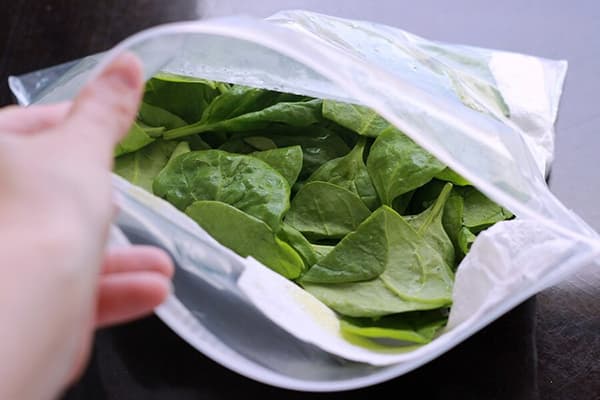
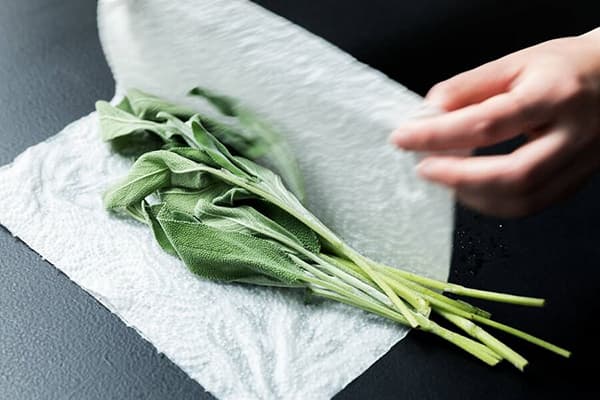
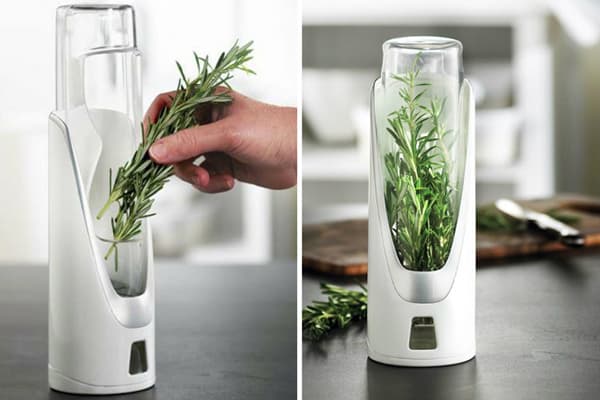
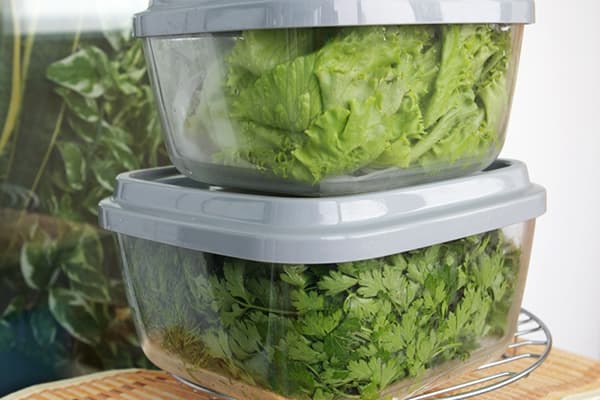
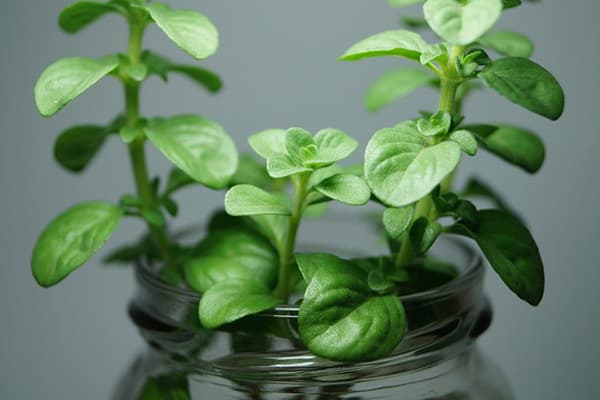
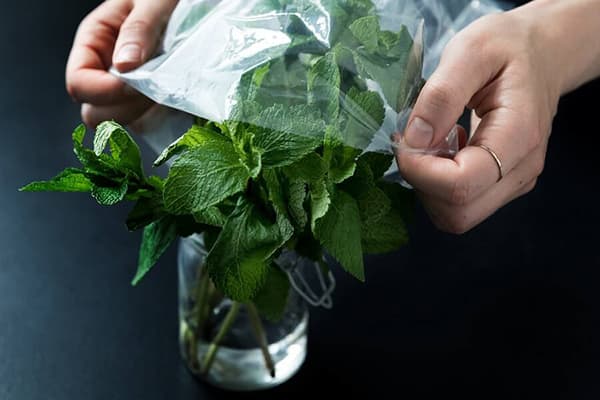
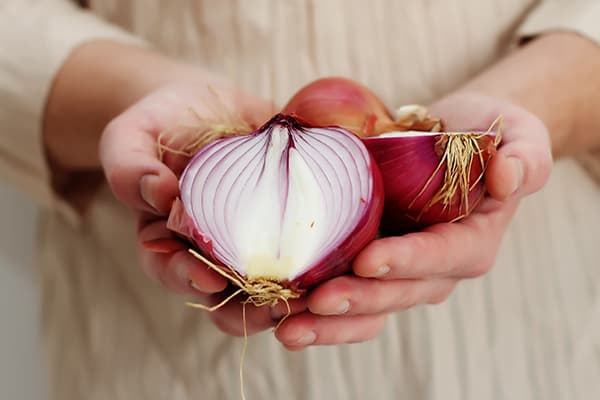
I store all my greens in the freshness zone of my refrigerator hotpoint. In fact, everything will be preserved much better and longer than with conventional storage.